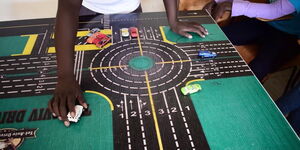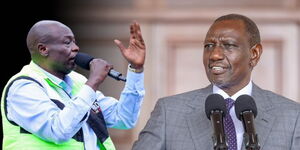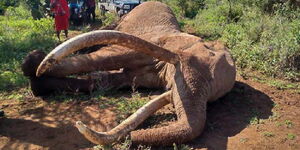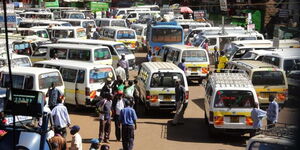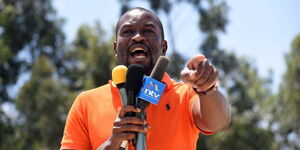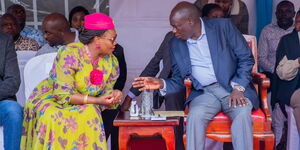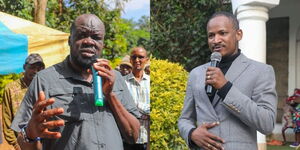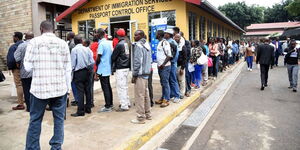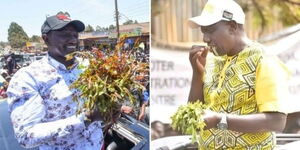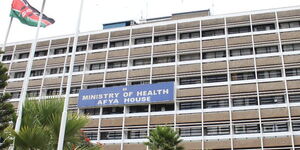Musalia Mudavadi’s earthquake did not have an immediate impact on the country. The aftermath and the ripple effect did, according to political analysts.
The union between the Amani National Congress (ANC) party leader and Deputy President William Ruto of the United Democratic Alliance’s (UDA) once again affirmed that ethnicized politics in Kenya creates a situation in which ethnicity-based voting blocs can command the majority, making it nearly impossible for minority communities to gain political representation at the presidential level.
Political scientist Mutahi Ngunyi calls this The Tyranny of Numbers. In that Ruto heavily relies on Mt Kenya, Rift Valley and Western Kenya voting regional blocks to lock out his perennial rival and former Prime Minister, Raila Odinga.
According to pundits, Ruto, Mudavadi and any other regional kingpin who will join this bandwagon are keen on extending the margin between the winner and the loser of the August General Election by locking Raila out of his strongholds. These include Western Kenya, Eastern and Coast - save for Nyanza.
In as much as the numbers decide, the margin is the focal point and the ultimate decider of Ruto and Raila’s fate. Herein comes the swing votes. In fact, the Ruto-Mudavadi union sent Raila back to the drawing board as he was thrown into a political quandary.
"Every election has a winner and loser. The margin is narrow but the responsibility is clear…a margin of only one vote would still be a mandate,” Robert F Kennedy, former United States Attorney General, stated.
Western Kenya
In the August 8, 2017 General Election, Raila Odinga who currently identifies himself with Azimio la Umoja received overwhelming support in this region, arguably due to the support of Musalia and Ford-Kenya’s Moses Wetangula who joined Ruto.
Musalia and Wetangula are said to be popular in the five counties that form the Mulhembe or Luhya nation. Vihiga, Kakamega, Busia, Bungoma and Trans Nzoia.
In Vihiga, Raila got 134,312 votes while President Uhuru Kenyatta, with Ruto as his running mate, garnered a paltry 18,275. The county has 272,415 registered voters.
Out of the 743,929 registered voters in Kakamega, 484,157 voted for Raila while 63,399 chose Uhuru.
Busia had 351,087 registered voters. 239,296 voted for Raila while 34,239 elected Uhuru. Bungoma with 559,866 registered voters stood with Raila who got 284,786 votes as Uhuru followed closely with 126,475 votes.
In Trans Nzoia, Raila garnered 134,312 votes with Uhuru getting 110,489 votes. The county had 339,715 registered voters.
The total number of registered voters in the region was around 2.2 million in 2017. This number increased by nearly 193,043 in November 2021 after the Independent Electoral and Boundaries Commission (IEBC) concluded its first phase of the voter registration exercise.
Kakamega got 57,816, Bungoma 51,204, Busia 30,109, Trans Nzoia 33,347 and Vihiga got 20,567 new voters.
Emergent factors in Western Kenya alongside the UDA-ANC and Ford-Kenya alliance are the inroads made by Ruto which has won him several allies, and the Democratic Action Party (DAP-K) launched by Defence Cabinet Secretary Eugene Wamalwa.
Western Kenya is now considered a battleground.
Lower Eastern
This is a region largely dominated by Raila owing to the support from the Wiper party leader, Kalonzo Musyoka. The region has four counties, Kitui, Machakos, Makueni and Taita Taveta.
Kalonzo, according to analysts, is, however, at crossroads on whether to join Mudavadi in Ruto’s camp or to support Raila with whom they fell out with.
In 2017, Kitui with 474,563 registered voters gave Raila 287,293 votes and Uhuru 64,652 votes.
In Machakos, out of the 620,363 registered voters, Raila got 380,018 votes and Uhuru 82,629 votes.
Makueni with 423,434 voters gave Raila 301,126 votes and Uhuru 27,388 votes. Raila had 79,990 votes and Uhuru 31,127 votes out of 155,794 registered voters in Taita Taveta.
The total number of voters then stood at nearly 1.6 million. This figure increased by 109,843 after IEBC concluded its first phase of the voter registration exercise in November 2021.
Kitui got 29,844, Machakos 39,475, Makueni 26,541 and Taita Taveta 13,983 new voters.
Emergent factors are the rise of the Maendeleo Chap Chap party led by Machakos Governor, Alfred Mutua, Narc-Kenya under Kitui Governor Charity Ngilu and Muungano Party led by Makueni Governor Kivutha Kibwana.
The trio vouch for Raila. Wiper’s Kalonzo Musyoka may have an effect on the votes and he has three options. To support Raila, Ruto or run on his own.
North Eastern
Out of the five counties, Garissa, Wajir, Mandera, Marsabit and Isiolo, the former has always been considered a swing area.
Garissa, in 2017 had 163,350 registered voters. Uhuru got 54,783 votes narrowly edging Raila who got 54,356 votes.
The number of voters increased by 24,931 after IEBC concluded its first phase of the voter registration exercise in November 2021.
Key factors that may shape the election are the influence of Garissa Township MP Aden Duale, a key ally of Ruto and the emergence of the Upya Party led by Treasury CS Ukur Yatani, Raila and Uhuru’s confidant.
Rift Valley
The region is undoubtedly under the firm grip of DP Ruto, but Nakuru, Laikipia and Turkana counties have currently been realigning with Raila.
In 2017, Nakuru which had 949,971 voters gave Raila 110,857 votes and Uhuru 639,297 votes. Laikipia gave Raila 20,694 votes as Uhuru led with 177,772 votes. Turkana which had 191,435 voters saw Raila get 96,336 votes and Uhuru 62,611 votes.
In November 2021, the areas registered new voters as follows. Nakuru 62,064, Laikipia 11,605 and Turkana 37,113 voters.
Nakuru, under Governor Lee Kinyajui who supports Raila, is set to be one of the highly contested regions with Senator Susan Kihika, Ruto’s ally, seeking to win the gubernatorial race.
Laikipia Governor, Ndiritu Muriithi supports Raila and has been touted as his possible running mate. Muriithi won the gubernatorial race in 2017 as an independent candidate against Jubilee’s Joshua Irungu. This underscored Uhuru’s less influence on the region.
Turkana is lukewarm. Its incumbent governor, Josphat Nanok, defected to Ruto’s UDA after falling out with Raila.

